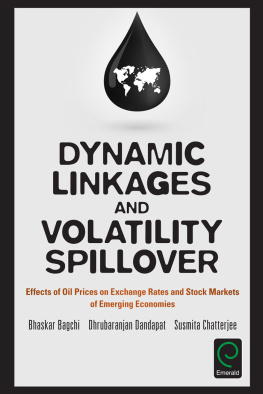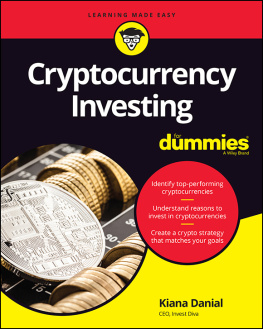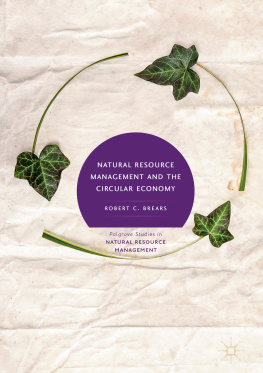Table of Contents
CRUDE VOLATILITY
CENTER ON GLOBAL ENERGY POLICY SERIES
CENTER ON GLOBAL ENERGY POLICY SERIES
Jason Bordoff, series editor
Making smart energy policy choices requires approaching energy as a complex and multifaceted system in which decision-makers must balance economic, security, and environmental priorities. Too often, the public debate is dominated by platitudes and polarization. Columbia Universitys Center on Global Energy Policy at SIPA seeks to enrich the quality of energy dialogue and policy by providing an independent and nonpartisan platform for timely analysis and recommendations to address todays most pressing energy challenges. The Center on Global Energy Policy Series extends that mission by offering readers accessible, policy-relevant books that have as their foundation the academic rigor of one of the worlds great research universities.
ROBERT MCNALLY
CRUDE VOLATILITY
The History and the Future of Boom-Bust Oil Prices
COLUMBIA UNIVERSITY PRESS
NEW YORK
Columbia University Press
Publishers Since 1893
New York Chichester, West Sussex
cup.columbia.edu
Copyright 2017 Columbia University Press
All rights reserved
E-ISBN 978-0-231-54368-2
Library of Congress Cataloging-in-Publication Data
A complete CIP record is available from the Library of Congress.
A Columbia University Press E-book.
CUP would be pleased to hear about your reading experience with this e-book at .
Cover design: Noah Arlow
For Denise, my sweetheart
The problem of oil, it might be tersely said, is that there is always too much or too little.
Myron Watkins, Oil: Stabilization or Conservation? 1937
I am opposed to too much government in business. But conditions have changed it looks like we must have some government in business. We will have to forget what we used to believe improper.
Texas Governor Ross Sterling, July 22, 1931
the price of oil must go to $1 a barrel; now dont ask me any more damned questions.
Oklahoma Governor W. H. Alfalfa Bill Murray, after declaring martial law and ordering troops to shut down oil wells, August 5, 1931
We dont care about oil prices$30 or $70, they are all the same to us.
Saudi Deputy Crown Prince Mohammed bin Salman, April 21, 2016
CONTENTS
M y inspiration to write this book stemmed from a lifelong passion for history and a professional career as an analyst, official, and consultant involved with the global oil market, energy policy, and geopolitics. My introduction to oil was somewhat accidental. After serving as a Peace Corps volunteer in Senegal, West Africa, I headed back to school to pursue a masters degree in international economics and U.S. foreign policy. My plan was to become a history teacher after graduating. But I needed a part time job to help pay graduate school expenses, and was hired as a research intern at an oil consulting firm.
My unplanned exposure to energy started during a tumultuous period in the oil market and an active one in energy policymaking. The 19901991 Gulf War had just ended and the George H. W. Bush administration was beginning to implement new oxygenated fuel regulations on gasoline. Daniel Yergins magnificent history of oil, The Prize: The Epic Quest for Oil, Money, and Power, had just been released and, like many, I devoured it with relish. In the course of punching oil market data into spreadsheets and analyzing OPEC and energy regulations, I realized the historical and contemporary oil market combined my main professional interestseconomics, policy, and geopoliticsin a thrilling fashion. So my career path changed. I joined the firm after graduating and began a rewarding journey in energy. (Though I still would like to be a history teacher one day.)
This book elaborates on analyses developed over the past ten years and shared mainly with my colleagues and clients. My central thesis is the recent dramatic swings in oil prices, including the bust since 2014 but also the mid-2000s boom and bust in 2008, need be understood in the historical context of the broader economic and policy drivers that impact the oil market. This required a fresh look at oils history, focusing on the critical role that supply control played in achieving the widely cherished goal of stabile oil prices. This focus led to my conclusion that, amid the boom in Asian demand in the early to mid-2000s and the more recent, surprise arrival of U.S. shale production, the most important feature of todays oil market is the absence of a swing producer able and willing to adjust supply to keep oil prices stable. Since the early 1930s, as this book details, someone has been trying to manage supply to keep oil prices from behaving as they have in the last ten years. No longer having such a swing producer implies a return to price volatility for which we have all but lost living memory and which we will find troublesome to manage. I presented these ideas at academic events and in congressional testimony, published some of the key themes with my co-author Michael Levi in Foreign Affairs in 2011 and 2014, and wrote a paper synopsizing this argument in December 2015 for the Columbia University Center on Global Energy Policy, where I am a fellow.
I decided to write this book to explore more deeply how oils history can clarify recent trends and shed light on tomorrows path, and to present my findings to the general reader as well as the energy expert.
Tackling this topic presented formidable challenges, not the least of which was getting good historical data and information. For barrel counters, the search for better data is a never-ending and arduous quest. Historical data on prices and spare production capacitycentral to this bookare especially scarce and patchy. I am therefore delighted and proud that my able research assistant Fernando Ferreira and I were able to unearth historical data and present two novel data sets, neither of which (to my knowledge) existed until now.
The first data set is a continuous, market-based price series for U.S. crude prices extending back to 1859 and continuing to the present on a monthly basis. Constructing this series entailed digging up prices based on field quotations, exchange-traded pipeline certificates (a proxy for crude oil prices), prices paid by Standard Oils purchasing agency, and data from the American Petroleum Institute and the Energy Information Administration.
.
The second unique data set developed for this book is for U.S. spare production capacity extending back to 1940 and continuous data on U.S. and global spare capacity since 1955 (that is, including the Seven Sisters until the early 1970s and OPEC afterward). This entailed exhuming information from various government and industry reports and publications. Currently, EIAs published OPEC spare production capacity extends back to 2003.
My goal is to contribute to our understanding of the economic and political forces that shaped oil prices in history so as to better understand them today and tomorrow. Whether I have succeeded I leave to you, dear reader, to judge.
I have been blessed all my life with supportive and talented family, friends, and professional associates, and the recent period spent writing this book is no exception. My expression of thanks cannot suffice but begin with my wife Denise Montroy-McNally and old friend Erwin Grandinger (an author himself). Both urged me to stop talking about writing this book and just do it.








